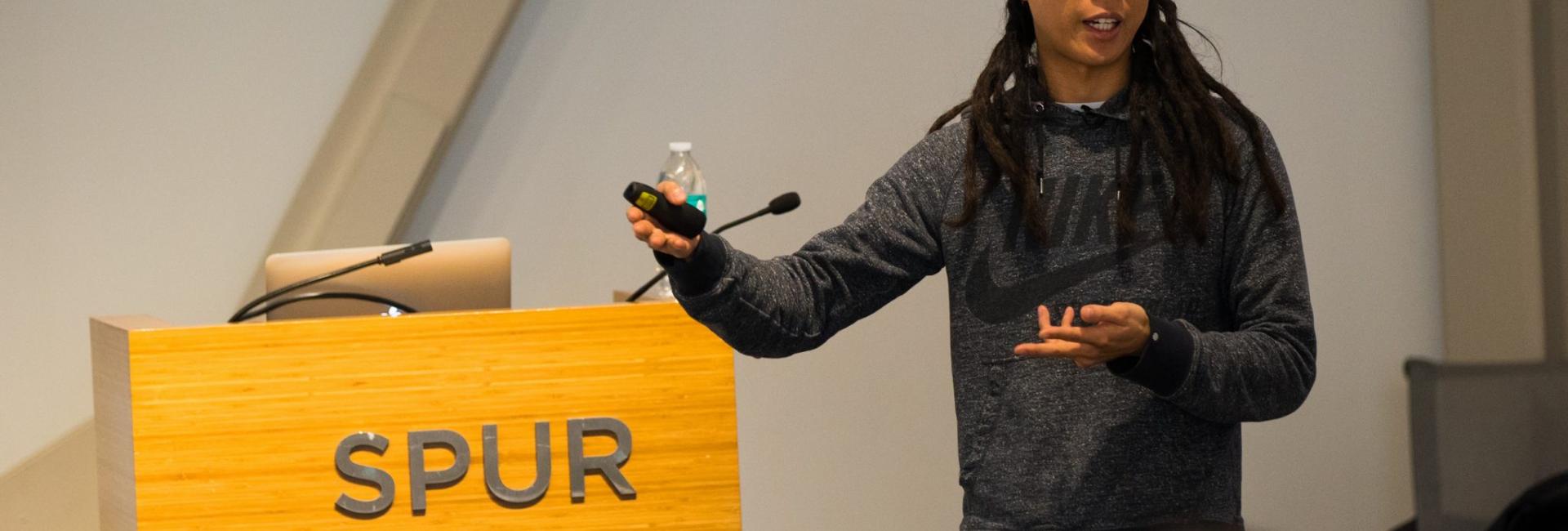If you're a startup, you’re probably banking on your idea changing the world. However, just selling your product to your friends and family isn’t going cut it. That's why we brought in Nemo Chu, Distribution Hacker in Residence at 500 Startups, to talk about growth hacking at a recent Yodlee Incubator boot camp. Nemo Chu knows what he is doing. He’s built three companies and recently founded his own e-commerce company, all with 7-figure annual revenues built off of his growth hacking skills. The good news is you don’t have to be a 10-year veteran growth hacker to organize a growth strategy. Nemo reminded us that we all know more about marketing than we realize because we’ve been marketed to all our lives. Here are some of Nemo’s key tips on growth hacking.
OMTM is your guiding light
Metrics are important. From open rate to the average lead age, if you don’t measure it, you can’t improve it. But what should you track and measure? Turns out in growth hacking, less is better. First, you need to define The One Metric That Matters Most (“OMTM”). Once startups identify their OMTM, they can then focus on the single thing that moves the needle. Keep in mind that you can always change it but you need to start with OMTM.
It’s all about the offer
Once you have users, the most important thing to test is your offer. And this doesn’t mean diving head first into details like the color of your offer button or what your headline is, but the actual offer itself. Each offer you test should be dramatically different than the other. Like a 7-day vs. a 30-day free trial. Or a free 7-day vs. a 60-day trial plus a free audio download and a report the customer can hand to their boss. When it comes to offers, instead of emulating other Internet companies, model yourself after packaged good companies and even late night TV offers – these work for a reason, and they’ve worked for a long time. The biggest mistake that companies make is selling just one thing as the customer gets to the point of purchase.
One of the best and easiest growth hacks is offering upsells and downsells. For instance, after the customer clicks to buy a product, you can upsell something related. If you’re selling a wallet, perhaps you offer a card protector that prevents their sensitive information from getting stolen. Or offer non-physical goods like upgraded shipping. Don’t be afraid to chain a lot of upsells and downsells together sequentially. This is an easy way to increase the average order value. If your customer declines an offer as they are checking out, consider offering it again – perhaps at 60% off this time instead of 50%. You can present offers in the checkout flow and even add them to your “thank you” pages. Customers won’t get upset if the offers are relevant. You can make your "thank you" pages work harder. Instead of merely thanking a customer for providing their information in exchange for a resource such as a white paper, you can tell them that their resource is on its way, and while they’re waiting, you happen to have a consultant who is ready to speak with them right away, if they simply type in their phone number. Automated tools can be a big help to your sales team, like the ones from speak2leads.com. These tools will call your sales rep when a form is submitted and also call the phone number that was submitted on the form. In addition to queuing up sales calls, the tools can indicate how long it takes for sales reps to call their leads. This is important because time kills deals.
Anyone can be a growth hacking rock star
After laying out growth hacking basics, Nemo had us come up with our own growth hacks to drive traffic and sales by breaking us up into teams and directing us to come up with as many marketing ideas as possible for a fictional startup. We brainstormed individually, writing each idea on an index card, and then shared ideas with our groups. In just three minutes, we had piles of ideas. And those ideas sparked other ideas.
Ridiculously Simple Guessing (RSG)
Nemo then showed how to assess ideas using RSG – Resources, Scalable, Gut (or, if you prefer, Ridiculously Simple Guessing). Take an idea, ask the following questions, and answer each question with a number from 1 to 4.
- How many resources will the idea take to execute? 4 = few; 1= a lot. For example, if your staff consists of Facebook marketing gurus, then Facebook based ideas will take less time and resources to execute.
- How scalable is this idea? 4 = very scalable; 1 = not so much. Are you able to build it once and use it over and over again? That idea earns a 4.
- What is your gut feeling about this idea being a home run? 4 = great. 1 = meh.
Add up the points for every idea, and then rank your ideas by how they score. The higher the score, the more feasible the idea.
Create your plan of action
Because ideas are nothing without execution, the next step is to plan how you’ll execute each idea. Here’s how to get started:
- Draw a horizontal 3-month timeline on a large blank whiteboard near your marketing team and add vertical markers for each week.
- Start with the first index card idea and break it down into tasks. Each task shouldn’t take longer than a half day to do. Write each task on a sticky note and place the sticky note where it belongs on the timeline.
- Assign ownership of each task to yourself or a team member. By involving everyone in the planning, accountability is baked in.
You can follow the same process for all of your ideas. And as Nemo reminded us, productivity is not about doing a lot of things. It’s about NOT doing a lot of things and only DOING THE RIGHT THINGS. Check out a full video of Nemo’s talk here. If you’re an entrepreneur with an idea to leverage financial transaction data, applications for our next cohort will open Summer 2018. You can learn more here.




